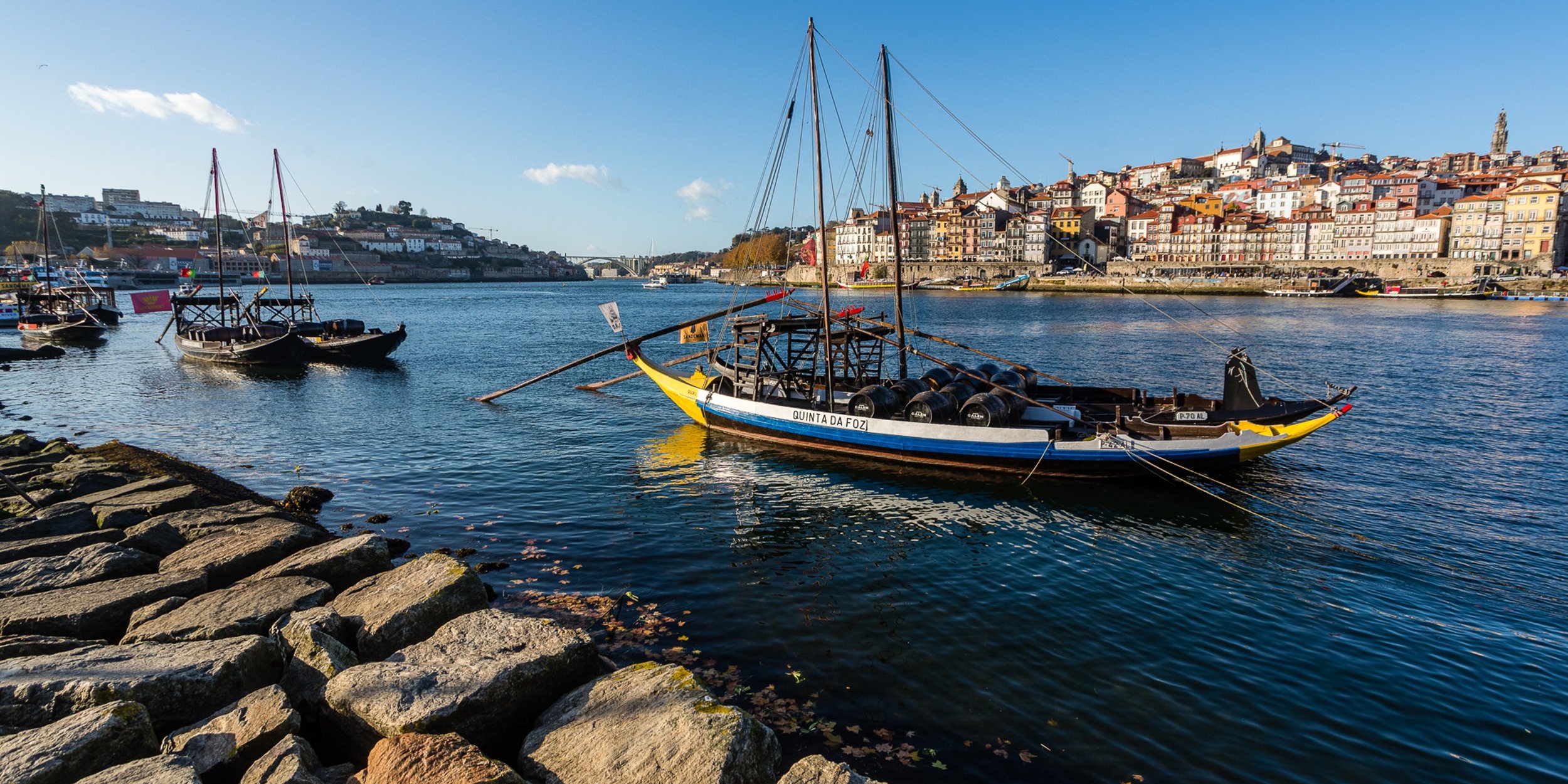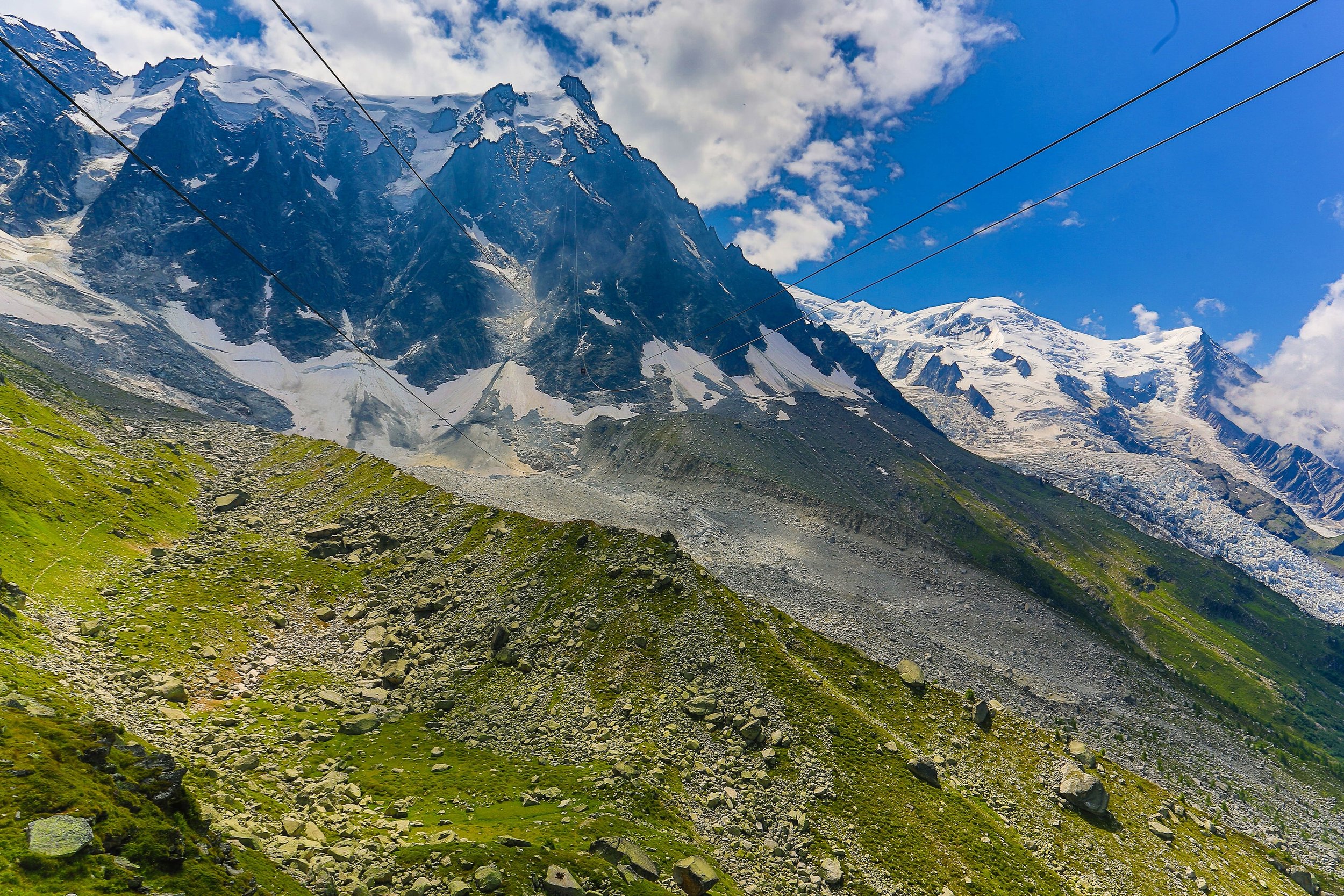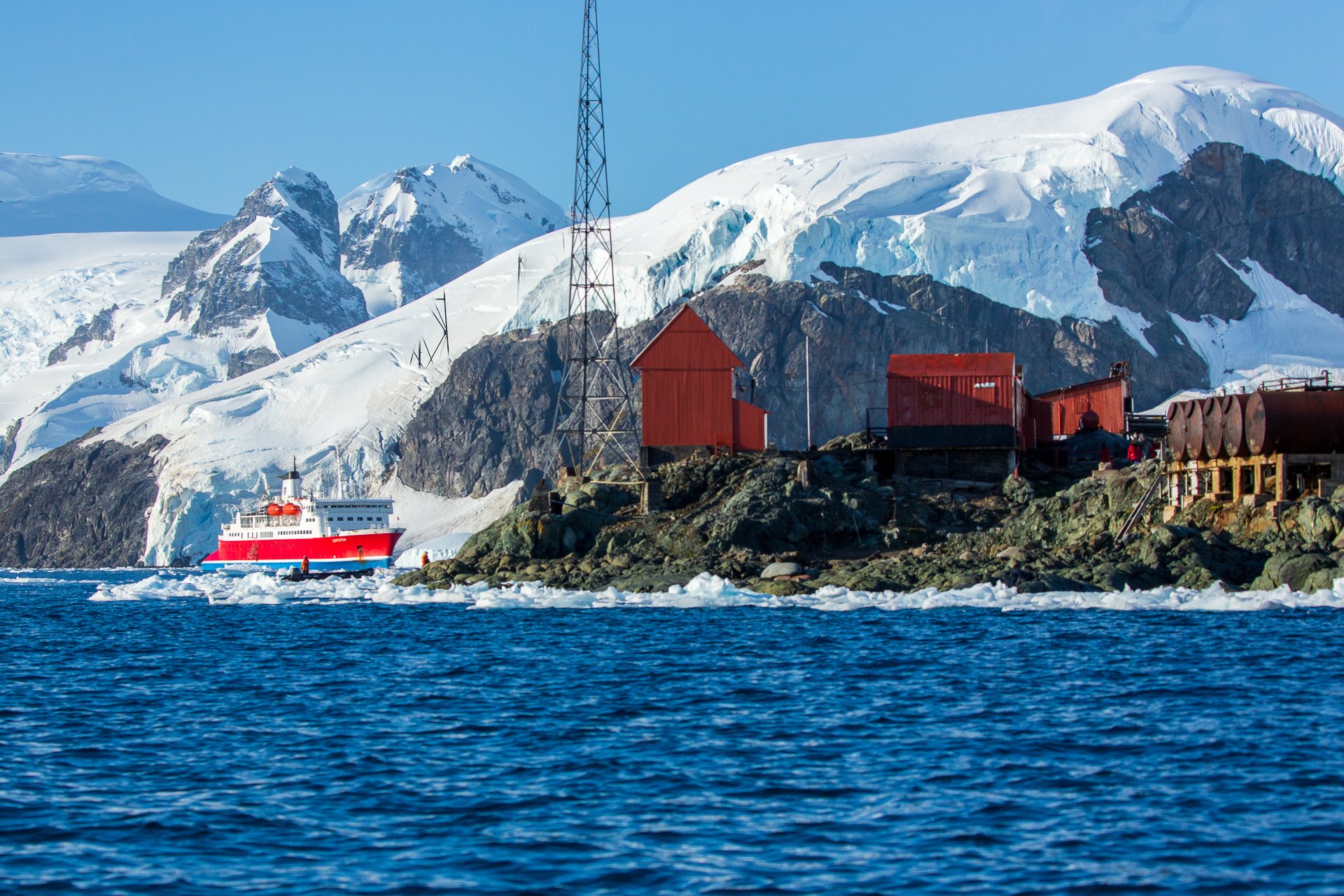Paradise Harbour
Paradise Harbour, located at 64°53′44″S 62°52′15″W, is an awe-inspiring destination surrounded by towering peaks and bathed in gorgeous weather. As we approached, we caught a glimpse of the bright orange huts of the Argentine base nestled on the edge of the island, each adorned with the flag of Argentina.
Experience
Estación Brown (Brown Station)
Named in honor of William Brown, the father of the Argentine Navy, Estación Brown is a well-sheltered Argentinian base surrounded by towering cliffs that offer relatively mild weather for its location. During our visit, the base was abandoned for the winter, like many other bases in the area.
The base consisted of a small number of buildings painted a vibrant orange, with Argentina referenced everywhere through signs and paint. During the winter, the base is taken over by penguins, with an invasion of the flightless birds nesting on the walls and roofs, relaxing under the buildings, and even wandering between the structures. The moulting chicks were almost as big as their mothers, signaling that it was almost time for them to venture out into the icy Antarctic waters.
Interestingly, researchers have found that the penguins who call Estación Brown home have a better survival rate than those in the main colonies. The prevailing theory is that the presence of humans scares away the birds that attack the penguins, leading to more successful chick rearing. The protection offered by the wood and metal structures likely also plays a role.
In addition to the penguins, we also spotted several Sheathbills and other birds making their rounds. After a climb up the snow-covered hill, we let our inner penguins soar as we slid down the slope, a truly incredible experience. The view from the top of the hill was stunning, offering panoramic views of the bay below.
Climbing the snowy hill, we got the chance to unlease our inner Penguin and slide down the slope from top to bottom. Incredible fun! I managed to get a good distance, and also managed to scoop up a lot of snow down my back!
From the top of the hill, you also get great views across the bay.
Zodiac cruise
We set out on a thrilling Zodiac cruise around Paradise Harbour, marveling at the stunning surroundings. One of the highlights of our tour was the chance to see an Antarctic Shag nest perched on the rocks. We also came across a Crabeater Seal stretched out on the ice, truly taken aback by the magnificence of the location.
Wildlife
Antarctic Shag
Antarctic Shags are a species of seabird in the cormorant family Phalacrocoracidae. They are found in the coastal waters of Antarctica and the surrounding sub-Antarctic islands. Antarctic Shags are relatively small birds, with dark feathers and a distinctive head crest. They feed on a variety of fish and squid, and are known to dive to great depths in search of food. Antarctic Shags are an important part of the ecosystem in the Southern Ocean, and are considered to be a good indicator of the overall health of the marine environment in the region.
Sheathbill
Sheathbills are birds in the family Chionidae, found in the coastal regions of Antarctica and the surrounding sub-Antarctic islands. They are the only birds in the world that feed primarily on scavenged food, such as carrion, eggs, and nesting material, as well as other food waste from penguins and seals. Sheathbills have a distinctive appearance, with a plump white body, black legs, and a short, thick bill. They are relatively large birds, with a wingspan of up to three feet. Despite their dependence on scavenging, Sheathbills play an important role in the ecosystem of the Southern Ocean, helping to maintain balance by consuming dead or decaying matter and reducing the likelihood of disease outbreaks.
Gentoo Penguin
Gentoo Penguins (Pygoscelis papua) are a species of penguin that is native to the Antarctic and sub-Antarctic regions. They are one of the largest species of penguins, and are easily recognizable by the distinctive white stripe that runs across the top of their heads. Gentoo Penguins have a distinctive appearance, with a striking orange-red bill and webbed feet, and they are known for their playful and energetic behavior. They feed mainly on small fish and krill, and are excellent swimmers, able to reach speeds of up to 22 miles per hour in the water. Gentoo Penguins are social birds, living in large colonies that can number in the thousands, and they are an important part of the ecosystem in the Southern Ocean, serving as a food source for predators such as leopard seals and orcas.
Chinstrap Penguin
Chinstrap Penguins (Pygoscelis antarctica) are a species of penguin that are found in the Southern Ocean, primarily in the Antarctic region. They are named for the distinctive black band under their heads that resembles a chinstrap, and they are one of the smallest species of penguins. Chinstrap Penguins are social birds, living in large colonies that can number in the tens of thousands, and they are known for their noisy and aggressive behavior. They feed mainly on krill and small fish, diving to depths of up to 300 meters in search of food. Chinstrap Penguins have a distinctive appearance, with black plumage on their backs and heads, and white underparts. They are an important part of the ecosystem in the Southern Ocean, serving as a food source for predators such as leopard seals and orcas.
Crabeater Seal
Crabeater seals (Lobodon carcinophaga) are a species of seals that are found in the Southern Ocean, primarily in the Antarctic region. They are called "crabeater seals" because they feed mainly on krill, which are small, shrimp-like crustaceans. Crabeater seals are among the most abundant marine mammals in the world, with populations estimated to be in the millions.
Crabeater seals are medium-sized seals, with adults typically weighing between 200 and 300 kilograms. They have a streamlined body shape and a distinctive head, with large eyes and sensitive whiskers. They are well adapted to life in the cold Antarctic waters, with thick fur and blubber layers that help them to stay warm and float in the water.
Crabeater seals breed on ice floes and fast ice during the summer months, with females giving birth to a single pup. They are not considered to be at risk of extinction, but like all wildlife populations, they are vulnerable to changes in the environment, including climate change and ocean acidification.
Location
Paradise Harbour is beautiful, surrounded by tall mountains and with incredible weather, we could see the seemingly small huts of the Argentine base on the edge of the island. The huts are all a bright orange with the flag of Argentina easily visible on the top.
64°53′44″S 62°52′15″W






























